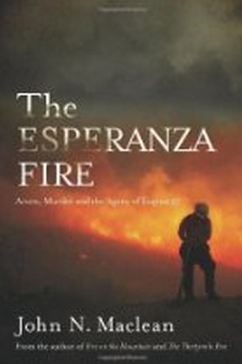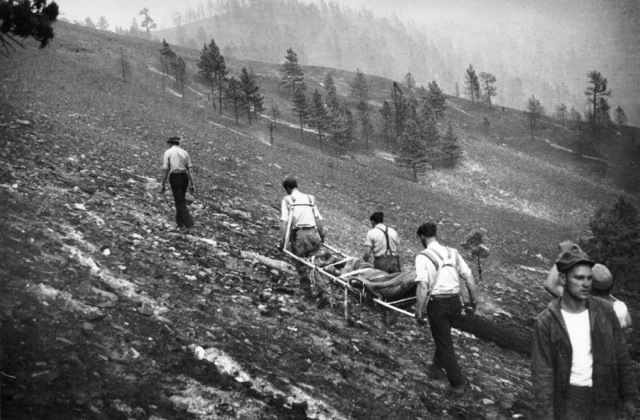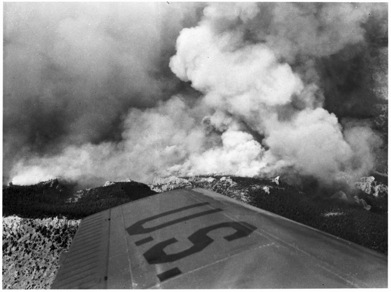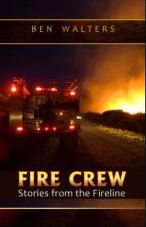In April we published an excerpt from a book by Linda M. Strader, Summers of Fire: A Memoir, which is about her experience as a wildland firefighter. Today we have an article written by her about what it was like to be one of the few female wildland firefighters during her seven seasons that began in 1976.
****
At the naïve age of twenty, I accepted my first firefighting position on the Nogales District of the Coronado National Forest in 1976. Although I knew what the position entailed, I didn’t know for sure what it would be like. However, I wanted this job, and figured the biggest challenge would be the hard physical work.
When I arrived at Florida Ranger Station (pronounced Flor-ee-da) as the only woman on a ten-person suppression crew, my supervisor scrutinized my petite frame and long blond hair. After shaking my hand, he checked my palm for calluses. Then he reached to squeeze my upper arm. While he did this, I smiled, thinking, he doesn’t think I’m strong enough! Immediately I knew I had to prove him wrong.

Soon it became quite apparent I would have to prove to all the men on my crew that I could handle the work, but only by working twice as hard to be accepted. However, it turned out even that wasn’t enough. By mid-summer, many of men on the crew made it perfectly clear they didn’t want me there. They harassed me, made sarcastic and snide remarks, told me I was a burden. At first devastated by the painful comments, I considered giving up. Instead, I persevered. I truly wanted this job.
Over the next two summers, I continued to work hard, standing up to the criticism from, and forming relationships with, the men on my crew. We shared the adventures of a lifetime; from a 50,000 acre wildfire in Northern California, to protecting the city of Flagstaff from burning to the ground. We had fun, too. We built trails and fence, laughed a lot, had water fights, shared secrets, fell in love. The supervisor who doubted me became my best ally.
After three fire seasons, I felt confident I’d proven myself. Then I found out that changing attitudes is not that easy, when I was denied a position on the Catalina Hotshots because I was female. Furious, I filed an Equal Employment Opportunity complaint, only to have it dismissed owing to lack of proof. This injustice only fueled my determination.
Mid-way into my fourth summer with the Forest Service, my supervisor delivered devastating news—the district labeled me a troublemaker for filing that EEO complaint, and I found myself blacklisted. Instead of giving up, I switched to the Bureau of Land Management for the next two summers. First I accept a position in Alaska, where I battled mosquitoes more than fires, and faced life-endangering events – not from fire – but from antics perpetuated by my lunatic boss. Next I took a job in Colorado, gaining confidence as I collected tree harvesting data in the Durango area.
Missing the excitement of firefighting, I returned to the Forest Service in 1982, finally becoming a Hotshot on the crew that denied me the position four years earlier. Unfortunately, an injury ended my career.
What is still amazing to me, is that over thirty years later, not a whole lot has changed. Women still struggle to be accepted in traditional men’s jobs, including the military. While dangerous work isn’t for everyone, I think it’s a personal choice. Everyone should have the chance to pursue whatever it is they love to do.
Follow the progress of my book: Summers of Fire: A memoir at http://summersoffirebook.blogspot.com






